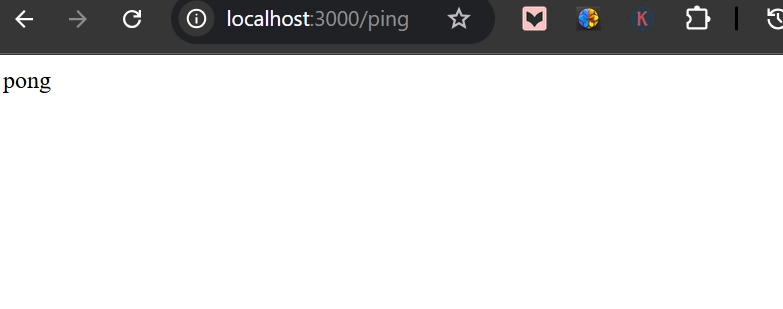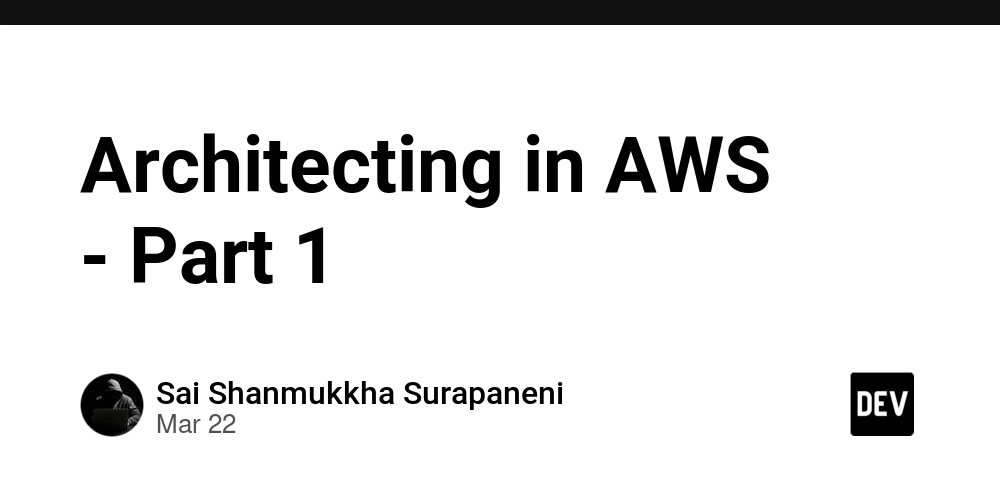Making an effective Application Security program: Strategies, Tips and Tools for the Best results
AppSec is a multi-faceted, robust strategy that goes far beyond simple vulnerability scanning and remediation. The constantly changing threat landscape, along with the speed of technology advancements and the increasing intricacy of software architectures, demands a holistic, proactive approach that seamlessly incorporates security into all phases of the development lifecycle. This comprehensive guide explores the key components, best practices, and the latest technologies that make up an extremely effective AppSec program, which allows companies to secure their software assets, reduce the risk of cyberattacks, and build a culture of security-first development. The underlying principle of a successful AppSec program lies a fundamental shift in mindset that views security as an integral aspect of the process of development rather than a secondary or separate project. This paradigm shift requires a close collaboration between developers, security, operations, and others. It breaks down silos that hinder communication, creates a sense sharing responsibility, and encourages an open approach to the security of the applications they develop, deploy, or maintain. DevSecOps allows organizations to integrate security into their processes for development. This means that security is considered at all stages, from ideation, development, and deployment up to regular maintenance. The key to this approach is the creation of specific security policies, standards, and guidelines that provide a framework for safe coding practices, vulnerability modeling, and threat management. The policies must be based on industry best practices, including the OWASP Top Ten, NIST guidelines, as well as the CWE (Common Weakness Enumeration), while also taking into account the particular requirements and risk profile of the organization's specific applications as well as the context of business. These policies should be codified and easily accessible to all stakeholders to ensure that companies have a uniform, standardized security strategy across their entire collection of applications. It is important to fund security training and education programs that assist in the implementation of these guidelines. These programs should provide developers with the knowledge and expertise to write secure codes as well as identify vulnerabilities and follow best practices for security throughout the development process. Training should cover a broad spectrum of topics that range from secure coding practices and the most common attack vectors, to threat modeling and security architecture design principles. Businesses can establish a solid base for AppSec by fostering an environment that promotes continual learning and providing developers with the resources and tools that they need to incorporate security in their work. In addition companies must also establish robust security testing and validation methods to find and correct weaknesses before they are exploited by malicious actors. This is a multi-layered process that encompasses both static and dynamic analysis techniques, as well as manual penetration tests and code reviews. Early in the development cycle, Static Application Security Testing tools (SAST) can be utilized to detect vulnerabilities like SQL Injection, cross-site scripting (XSS) and buffer overflows. Dynamic Application Security Testing (DAST) tools, on the other hand can be used to simulate attacks on running applications, identifying vulnerabilities that might not be detected using static analysis on its own. These automated testing tools are very effective in the detection of weaknesses, but they're not an all-encompassing solution. Manual penetration testing conducted by security experts is crucial in identifying business logic-related vulnerabilities that automated tools could miss. Combining automated testing and manual verification allows companies to get a complete picture of the security posture of an application. They can also prioritize remediation efforts according to the severity and impact of vulnerabilities. To enhance the efficiency of an AppSec program, organizations must take into consideration leveraging advanced technology like artificial intelligence (AI) and machine learning (ML) to augment their security testing and vulnerability management capabilities. AI-powered tools can examine huge amounts of code and application data, identifying patterns as well as anomalies that could be a sign of security vulnerabilities. These tools can also increase their detection and prevention of new threats by learning from the previous vulnerabilities and attack patterns. Code property graphs are an exciting AI application for AppSec. They can be used to identify and address vulnerabilities more effectively and efficiently. CPGs are a comprehensive, visual representation of the application's source code, which captures not just the syntactic architecture of the code but additionally the intricate relationships and dep

AppSec is a multi-faceted, robust strategy that goes far beyond simple vulnerability scanning and remediation. The constantly changing threat landscape, along with the speed of technology advancements and the increasing intricacy of software architectures, demands a holistic, proactive approach that seamlessly incorporates security into all phases of the development lifecycle. This comprehensive guide explores the key components, best practices, and the latest technologies that make up an extremely effective AppSec program, which allows companies to secure their software assets, reduce the risk of cyberattacks, and build a culture of security-first development.
The underlying principle of a successful AppSec program lies a fundamental shift in mindset that views security as an integral aspect of the process of development rather than a secondary or separate project. This paradigm shift requires a close collaboration between developers, security, operations, and others. It breaks down silos that hinder communication, creates a sense sharing responsibility, and encourages an open approach to the security of the applications they develop, deploy, or maintain. DevSecOps allows organizations to integrate security into their processes for development. This means that security is considered at all stages, from ideation, development, and deployment up to regular maintenance.
The key to this approach is the creation of specific security policies, standards, and guidelines that provide a framework for safe coding practices, vulnerability modeling, and threat management. The policies must be based on industry best practices, including the OWASP Top Ten, NIST guidelines, as well as the CWE (Common Weakness Enumeration), while also taking into account the particular requirements and risk profile of the organization's specific applications as well as the context of business. These policies should be codified and easily accessible to all stakeholders to ensure that companies have a uniform, standardized security strategy across their entire collection of applications.
It is important to fund security training and education programs that assist in the implementation of these guidelines. These programs should provide developers with the knowledge and expertise to write secure codes as well as identify vulnerabilities and follow best practices for security throughout the development process. Training should cover a broad spectrum of topics that range from secure coding practices and the most common attack vectors, to threat modeling and security architecture design principles. Businesses can establish a solid base for AppSec by fostering an environment that promotes continual learning and providing developers with the resources and tools that they need to incorporate security in their work.
In addition companies must also establish robust security testing and validation methods to find and correct weaknesses before they are exploited by malicious actors. This is a multi-layered process that encompasses both static and dynamic analysis techniques, as well as manual penetration tests and code reviews. Early in the development cycle, Static Application Security Testing tools (SAST) can be utilized to detect vulnerabilities like SQL Injection, cross-site scripting (XSS) and buffer overflows. Dynamic Application Security Testing (DAST) tools, on the other hand can be used to simulate attacks on running applications, identifying vulnerabilities that might not be detected using static analysis on its own.
These automated testing tools are very effective in the detection of weaknesses, but they're not an all-encompassing solution. Manual penetration testing conducted by security experts is crucial in identifying business logic-related vulnerabilities that automated tools could miss. Combining automated testing and manual verification allows companies to get a complete picture of the security posture of an application. They can also prioritize remediation efforts according to the severity and impact of vulnerabilities.
To enhance the efficiency of an AppSec program, organizations must take into consideration leveraging advanced technology like artificial intelligence (AI) and machine learning (ML) to augment their security testing and vulnerability management capabilities. AI-powered tools can examine huge amounts of code and application data, identifying patterns as well as anomalies that could be a sign of security vulnerabilities. These tools can also increase their detection and prevention of new threats by learning from the previous vulnerabilities and attack patterns.
Code property graphs are an exciting AI application for AppSec. They can be used to identify and address vulnerabilities more effectively and efficiently. CPGs are a comprehensive, visual representation of the application's source code, which captures not just the syntactic architecture of the code but additionally the intricate relationships and dependencies between various components. By leveraging the power of CPGs artificial intelligence-powered tools, they are able to conduct a deep, contextual analysis of a system's security posture, identifying vulnerabilities that may be overlooked by static analysis techniques.
Furthermore, CPGs can enable automated vulnerability remediation using the help of AI-powered code transformation and repair techniques. AI algorithms can create targeted, context-specific fixes through analyzing the semantic structure and nature of the vulnerabilities they find. This permits them to tackle the root of the issue, rather than dealing with its symptoms. This technique not only speeds up the treatment but also lowers the chances of breaking functionality or creating new vulnerability.
Another key aspect of an effective AppSec program is the incorporation of security testing and validation into the ongoing integration and continuous deployment (CI/CD) pipeline. Through automating security checks and embedding them in the build and deployment process organizations can detect vulnerabilities earlier and stop them from entering production environments. The shift-left approach to security provides faster feedback loops and reduces the time and effort needed to find and fix problems.
In order for organizations to reach this level, they should invest in the right tools and infrastructure that will support their AppSec programs. It is not just the tools that should be utilized for security testing however, the platforms and frameworks which facilitate integration and automation. Containerization technologies such as Docker and Kubernetes are crucial in this regard because they offer a reliable and consistent setting for testing security as well as isolating vulnerable components.
Effective communication and collaboration tools are as crucial as technical tooling for creating a culture of safety and making it easier for teams to work with each other. Jira and GitLab are problem tracking systems that allow teams to monitor and prioritize security vulnerabilities. Chat and messaging tools like Slack and Microsoft Teams facilitate real-time knowledge sharing and exchange between security experts.
The performance of the success of an AppSec program depends not only on the tools and technologies employed but also on the individuals and processes that help the program. In order to create a culture of security, you need the commitment of leaders with clear communication and an ongoing commitment to improvement. Through fostering a sense shared responsibility for security, encouraging open dialogue and collaboration, and supplying the appropriate resources and support companies can make sure that security is not just a box to check, but an integral element of the development process.
To ensure that their AppSec programs to remain effective for the long-term companies must establish relevant metrics and key performance indicators (KPIs). These KPIs help them keep track of their progress and identify improvement areas. These metrics should encompass the entire lifecycle of applications, from the number of vulnerabilities identified in the development phase to the duration required to address security issues, as well as the overall security of the application in production. These metrics are a way to prove the benefits of AppSec investment, identify trends and patterns, and help organizations make decision-based decisions based on data on where to focus their efforts.
Moreover, organizations must engage in ongoing educational and training initiatives to stay on top of the constantly changing security landscape and new best practices. Attending industry conferences and online classes, or working with experts in security and research from outside will help you stay current on the latest trends. Through fostering a continuous culture of learning, companies can ensure that their AppSec programs are flexible and resilient to new threats and challenges.
get the details It is essential to recognize that application security is a constant procedure that requires continuous commitment and investment. Organizations must constantly reassess their AppSec strategy to ensure that it remains efficient and in line to their business objectives as new technology and development methods emerge. By embracing a mindset of continuous improvement, encouraging cooperation and collaboration, as well as leveraging the power of advanced technologies like AI and CPGs, organizations can create a strong, flexible AppSec program that not only protects their software assets, but enables them to develop with confidence in an increasingly complex and challenging digital landscape.get the details







































































































































































![[The AI Show Episode 143]: ChatGPT Revenue Surge, New AGI Timelines, Amazon’s AI Agent, Claude for Education, Model Context Protocol & LLMs Pass the Turing Test](https://www.marketingaiinstitute.com/hubfs/ep%20143%20cover.png)

































































































































![From drop-out to software architect with Jason Lengstorf [Podcast #167]](https://cdn.hashnode.com/res/hashnode/image/upload/v1743796461357/f3d19cd7-e6f5-4d7c-8bfc-eb974bc8da68.png?#)










































































































.jpg?#)































_ArtemisDiana_Alamy.jpg?#)


 (1).webp?#)







































































-xl.jpg)














![Yes, the Gemini icon is now bigger and brighter on Android [U]](https://i0.wp.com/9to5google.com/wp-content/uploads/sites/4/2025/02/Gemini-on-Galaxy-S25.jpg?resize=1200%2C628&quality=82&strip=all&ssl=1)











![Apple Rushes Five Planes of iPhones to US Ahead of New Tariffs [Report]](https://www.iclarified.com/images/news/96967/96967/96967-640.jpg)
![Apple Vision Pro 2 Allegedly in Production Ahead of 2025 Launch [Rumor]](https://www.iclarified.com/images/news/96965/96965/96965-640.jpg)































































































































